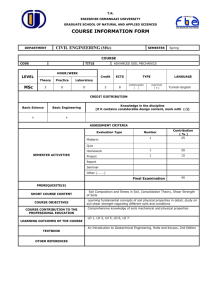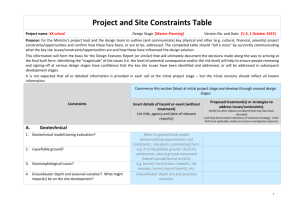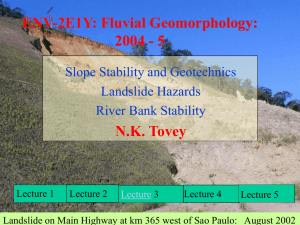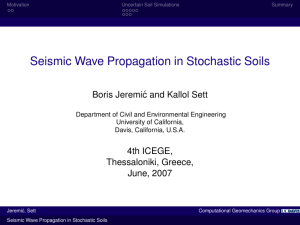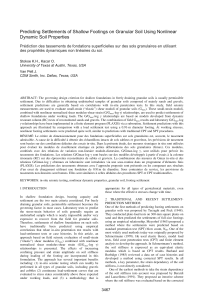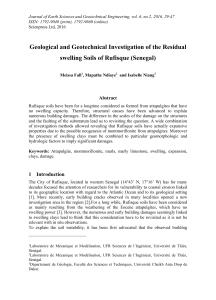Xavier-original-Final
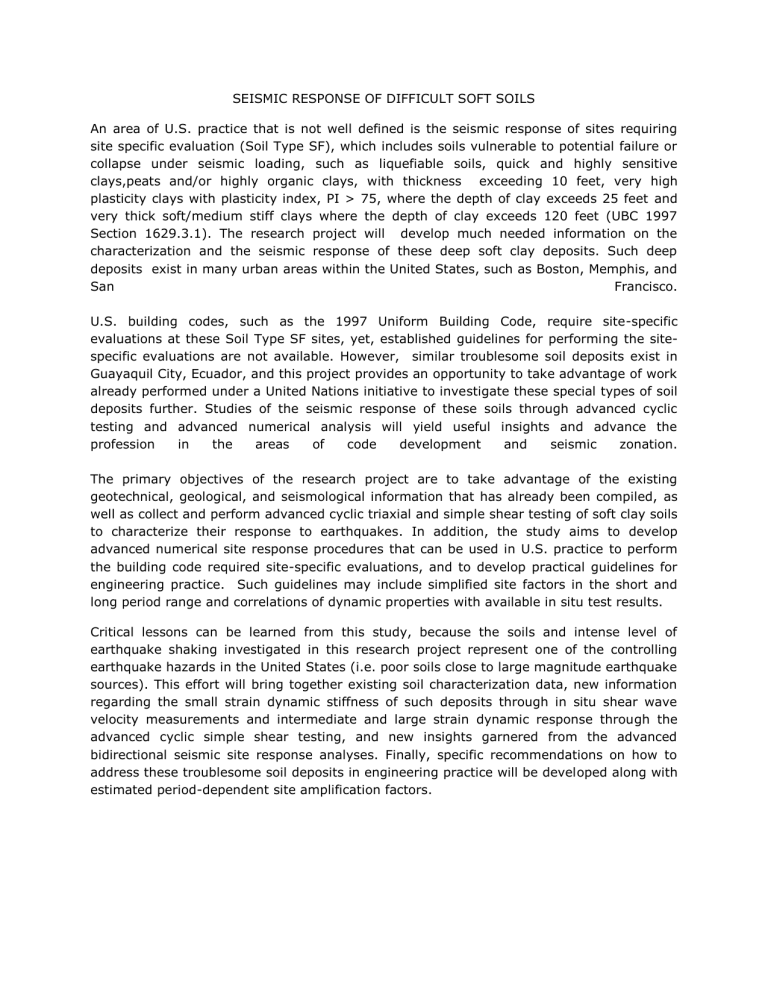
SEISMIC RESPONSE OF DIFFICULT SOFT SOILS
An area of U.S. practice that is not well defined is the seismic response of sites requiring site specific evaluation (Soil Type SF), which includes soils vulnerable to potential failure or collapse under seismic loading, such as liquefiable soils, quick and highly sensitive clays,peats and/or highly organic clays, with thickness exceeding 10 feet, very high plasticity clays with plasticity index, PI > 75, where the depth of clay exceeds 25 feet and very thick soft/medium stiff clays where the depth of clay exceeds 120 feet (UBC 1997
Section 1629.3.1). The research project will develop much needed information on the characterization and the seismic response of these deep soft clay deposits. Such deep deposits exist in many urban areas within the United States, such as Boston, Memphis, and
San Francisco.
U.S. building codes, such as the 1997 Uniform Building Code, require site-specific evaluations at these Soil Type SF sites, yet, established guidelines for performing the sitespecific evaluations are not available. However, similar troublesome soil deposits exist in
Guayaquil City, Ecuador, and this project provides an opportunity to take advantage of work already performed under a United Nations initiative to investigate these special types of soil deposits further. Studies of the seismic response of these soils through advanced cyclic testing and advanced numerical analysis will yield useful insights and advance the profession in the areas of code development and seismic zonation.
The primary objectives of the research project are to take advantage of the existing geotechnical, geological, and seismological information that has already been compiled, as well as collect and perform advanced cyclic triaxial and simple shear testing of soft clay soils to characterize their response to earthquakes. In addition, the study aims to develop advanced numerical site response procedures that can be used in U.S. practice to perform the building code required site-specific evaluations, and to develop practical guidelines for engineering practice. Such guidelines may include simplified site factors in the short and long period range and correlations of dynamic properties with available in situ test results.
Critical lessons can be learned from this study, because the soils and intense level of earthquake shaking investigated in this research project represent one of the controlling earthquake hazards in the United States (i.e. poor soils close to large magnitude earthquake sources). This effort will bring together existing soil characterization data, new information regarding the small strain dynamic stiffness of such deposits through in situ shear wave velocity measurements and intermediate and large strain dynamic response through the advanced cyclic simple shear testing, and new insights garnered from the advanced bidirectional seismic site response analyses. Finally, specific recommendations on how to address these troublesome soil deposits in engineering practice will be developed along with estimated period-dependent site amplification factors.




